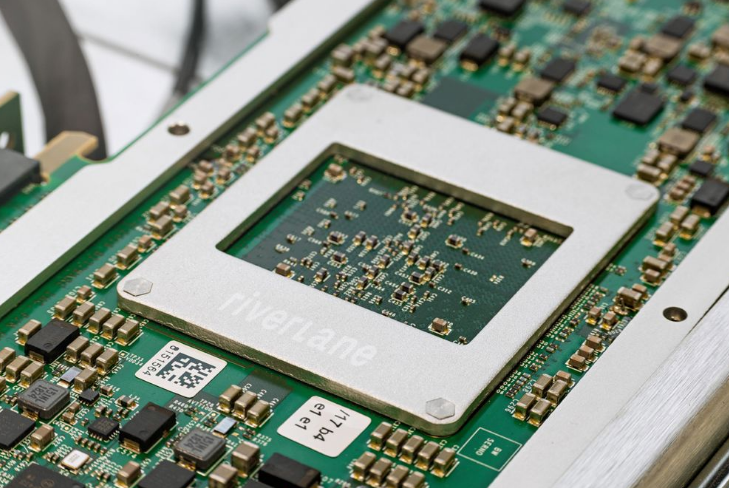Big Four
It’s common knowledge the world has become too dependent on Asia’s semiconductor industry, and one that some are trying to address. Intel, a legacy global tech company, has even gone so far as to say it is not “palatable” that countries like China, Japan, South Korea, and Taiwan together — combined known as the “Big 4” — have a monopoly on the manufacture of computer chips, with some 75% of global semiconductor production centred in the Far East.
Individuals, too, are playing their part. After years of relentless advocacy and a long history of fighting to advance semiconductor manufacturing and R&D and the broader tech economy at the federal level, Charles E. Schumer, US Senate Majority Leader, announced last week in a press release the Senate had passed his historic federal semiconductor incentive, scientific research, and technological competitiveness bill to bring manufacturing back from overseas to places like Upstate New York.
New Bill
“This bill means lowering costs for families, strengthening our national security, and bringing manufacturing back to Upstate New York. With its rare combination of a world-class workforce, advanced manufacturers, and renowned higher education institutions, I wrote and championed this legislation with Upstate New York always at the forefront of my mind and now it is primed to reap the rewards. I want to see the future made in Upstate New York,” said Senator Schumer. “When you combine the chip manufacturing potential at sites like White Pine Commerce Park in Central New York, Marcy Nanocenter in the Mohawk Valley, and STAMP in Genesee County, with Globalfoundries and Wolfspeed’s existing plants and onsemi soon acquiring a facility in East Fishkill, NY, all coupled with world-renowned research capabilities at the Albany Nanocenter and across the SUNY system and the state’s universities and labs, Upstate New York could be the nation’s leader in microchips and other tech industries that will dominate this century. Simply put — this is the 21st Century’s Erie Canal”
Specifically, Schumer highlighted that the bill includes:

• $39 billion for the CHIPS for America Fund to provide federal incentives to build, expand, or modernize domestic facilities and equipment for semiconductor fabrication, assembly, testing, advanced packaging, or research and development.
• $11 billion for Department of Commerce research and development including creating a National Semiconductor Technology Center (NSTC) a public-private partnership to conduct advanced semiconductor manufacturing, with Albany Nanotech primed to be a top contender to serve as a major hub for the NSTC, and other specialized R&D programs that universities across the state are in a strong position to compete for.
• $2 billion for the DoD CHIPS for America Defense Fund.
• $200 million for the CHIPS for America Workforce and Education Fund to kick start the development of the domestic semiconductor workforce, which faces near-term labor shortages, by leveraging activities of the National Science Foundation.
• A new Investment Tax Credit for semiconductor manufacturing facilities and equipment.
• $10 billion Regional Technology Hubs to support regional economic development efforts around the country to not only research and innovate technologies, but also manufacture them here in America.
• $1.5 billion for the Public Wireless Supply Chain Innovation Fund to spur the race to 5G, software-based wireless technologies, and innovative ‘leap-ahead’ technologies in the U.S. mobile broadband market. Schumer said that New York companies like JMA Wireless would be first in line for the $1.5 billion in federal incentives for next-generation telecommunications tech included in his bill. This investments builds on the $65 billion to expand high-speed internet across the country passed in the Bipartisan Infrastructure & Jobs Law in which Schumer made sure to include Build America, Buy America provisions to ensure companies like JMA Wireless would build the technology used in the high-speed internet expansion.
• Increased investment for National Science Foundation (NSF) Research and Development Programs, including through a new technology directorate as proposed in Schumer’s original bipartisan Endless Frontier Act, and STEM education and training programs. Schumer said the region’s top research schools connected throughout the SUNY system, and others would be able to tap the increased investment for the NSF. Community colleges would also be able to utilize new investment for workforce training, including for the semiconductor industry.
• $13 billion to build the STEM workforce. Authorizes funding for STEM education, including scholarships, fellowships, and traineeships to create workers in critical fields, including to establishing an artificial intelligence scholarship-for-service program, a national network for microelectronics education, and cybersecurity workforce development programs.
• $2 billion to strengthen small manufacturers. Triples funding for Manufacturing Extension Partnership, to support small- and medium-sized manufacturers with cybersecurity, workforce training, and supply chain resiliency.
• New investment to combat Supply Chain Disruption. Leverages the Manufacturing Extension Partnership to create a National Supply Chain Database, to assist the businesses with supplier scouting and minimizing supply chain disruptions.
• Over $800 million to grow Manufacturing USA. Supports the creation of new competitively awarded manufacturing research institutes with expanded capacity for education and workforce development.
• Infusion of new funds for the Department of Energy National Labs like Brookhaven National Lab. Funds will advance research and development, including in key technology areas like quantum computing, artificial intelligence (AI), and more.
SEEQC
The last point is of particular interest to The Quantum Insider, as the “infusion of new funds to advance research and development” is great news for the quantum computing industry in New York State, a hotbed for startups in the space, with the likes of EeroQ, Entanglement Inc., Next Generation Quantum, Qrypt, Quantum Trilogy, and Turing having made The Empire State their home. Schumer highlights one particular quantum computing company in his press release, Elmsford-based SEEQC, a spinout from Hypres, a leader in commercial superconductive electronics solutions. Founded in 2019 by John Levy, Oleg Mukhanov and Matthew Hutchings, SEEQC is one of the first companies to have built a superconductor multi-layer commercial chip foundry and through this experience has the infrastructure in place for the design, testing and manufacturing of quantum-ready superconductors.

Wanting to dig a little deeper, The Quantum Insider asked SEEQC’s CEO John Levy for his thoughts on the bill and how he thinks it will affect his company:
“We thank Senator Schumer for his tireless work as a lead negotiator of the CHIPS-Plus Act. This innovative legislation will give SEEQC new opportunities to further expand our Westchester-based foundry facility in New York to build the world’s first chip-based quantum computer.”
With only 12% of chips manufactured in the United States now, compared to 37% in the 1990s, the State of New York’s shift to more self-reliance in semiconductor production might be a precedent for a nationwide move towards bringing manufacturing back to America, which will be good not only for quantum computing but for the country as a whole.
For more market insights, check out our latest quantum computing news here.

















